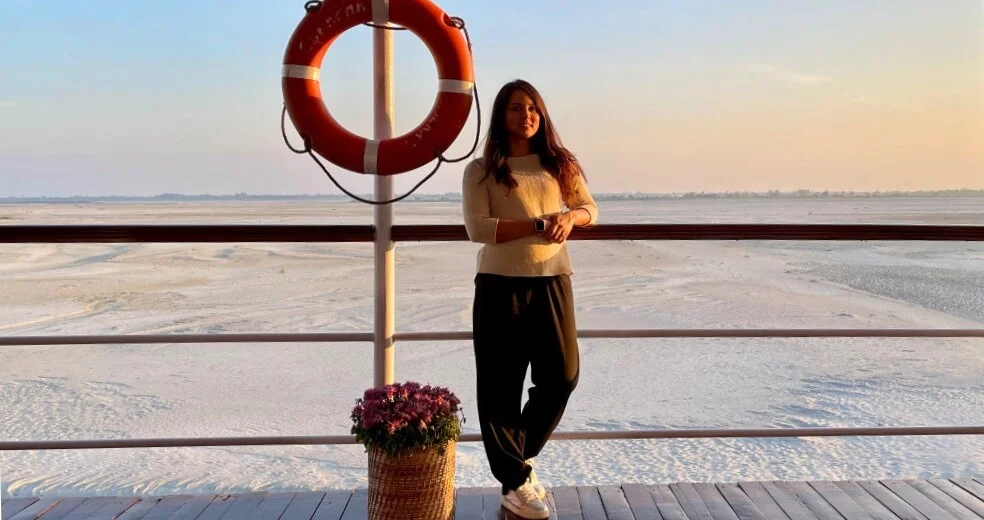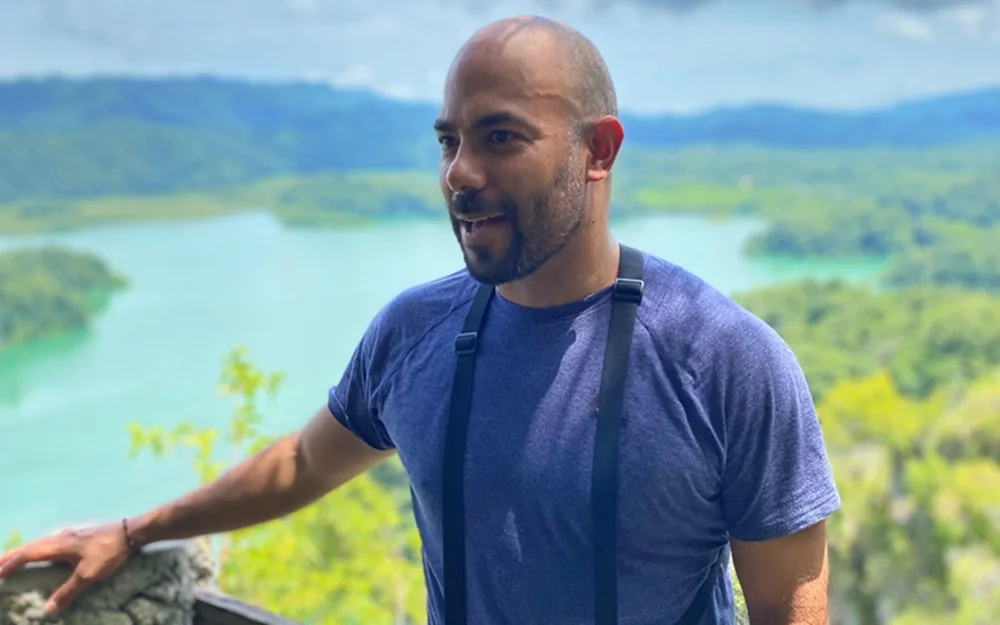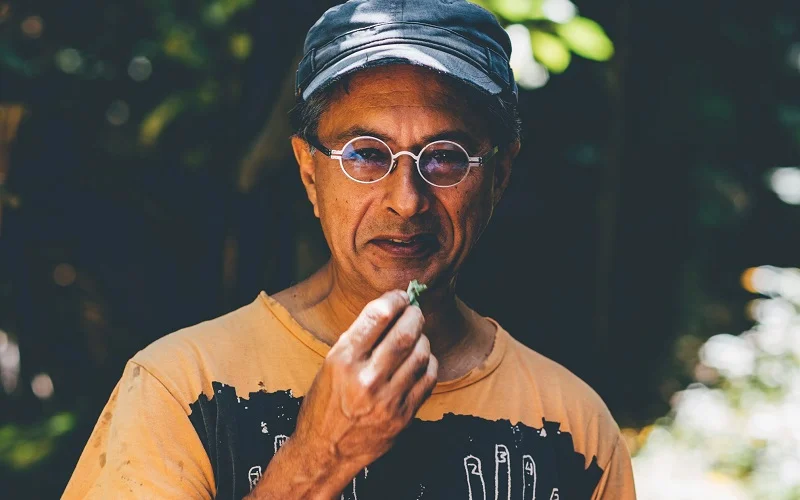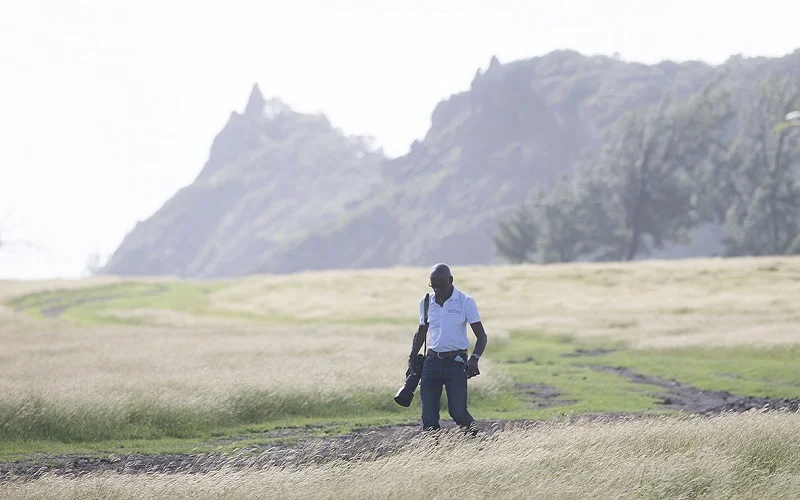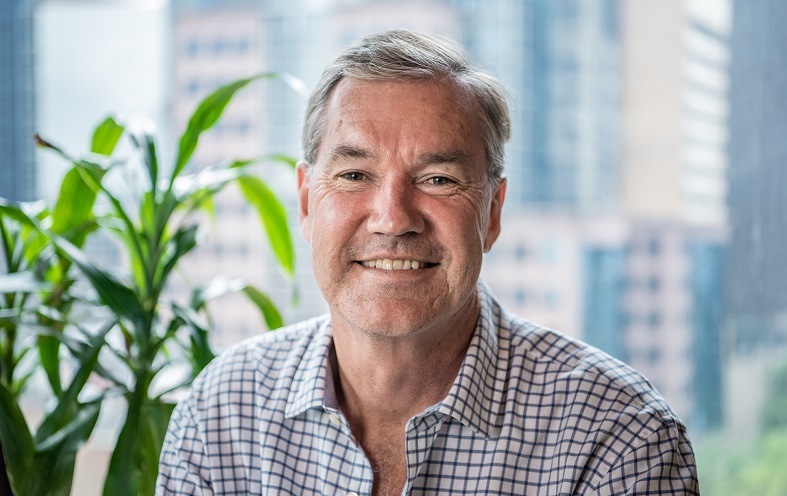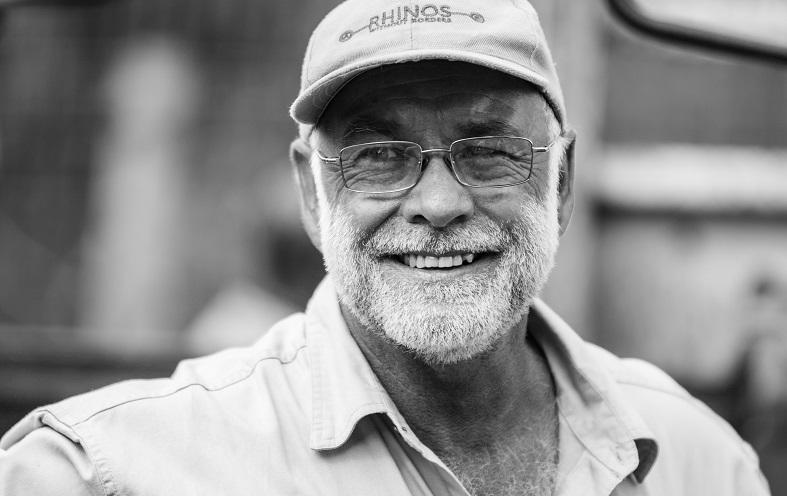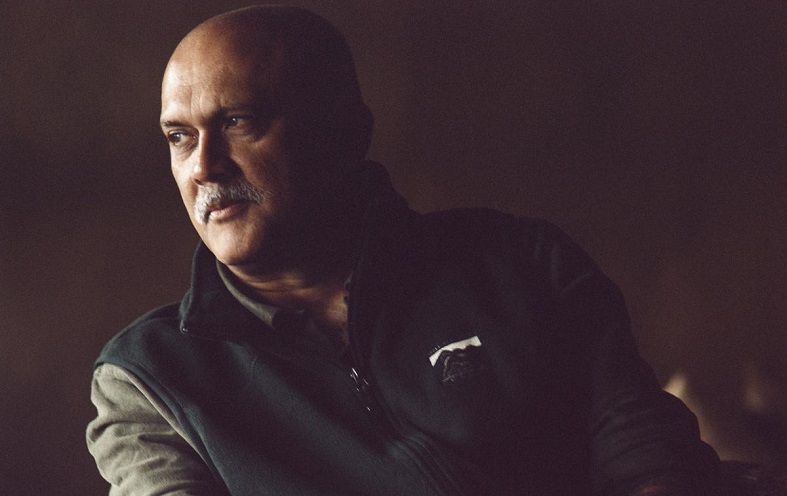
Australia – despite its rich endemic wildlife – isn’t yet on the top of the list of ecotourism connoisseurs. Wildlife conservation practices and tourism development have something to do with this. Fortunately, there is no shortage of individuals doing great work. We already shared the story of Echidna Walkabout in Melbourne – just one example of passionate folks championing sustainable tourism – and being very successful at it.
This time we visit Craig Wickham of Exceptional Kangaroo Island tours, in South Australia. Craig shares his experience of running a small tour business and also discusses the bigger issues.
Craig, do you remember the first time you heard about sustainability in connection with tourism? What got you interested in the topic?
I grew up on Kangaroo Island with a strong interest in the environment which surrounded me, and my family invested in the tourism industry in the mid-70s. As a young fellow, I worked for the National Parks and Wildlife Service, followed by a 12-month stint living and travelling in Southern Africa. I saw some excellent examples of sustainable tourism and active conservation in Namibia and elsewhere in South Africa – both public and private. I experienced some extraordinary landscapes in the Cedarburg Mountains in the Western Cape, and walking the Otter Trail in Tsitsikamma National Park.
On my return to Australia, I studied Wildlife and Park Management and then had a series of roles with National Parks and Wildlife Service – largely focused on visitor management and environmental education.
I loved the visitor and environmental interaction but the bureaucracy – less so. I decided my future would be better served in the private sector and ended up in a business that blended my experience in travel, environment, and hospitality in my home community of Kangaroo Island.
From the outset, I knew that to offer a diversity of really engaging and immersive wildlife encounters and have an impact on how people see the natural world, I needed to focus on small scale tourism. So from 1990 we really had a strong focus on sustainability. And in order to ensure that I was pursuing what was “best practice” at the time, I got involved in the Ecotourism Association of Australia and have retained an active membership from that time.
How has your view on tourism and sustainability changed or evolved over time?
One really strong “wake up” was realizing that no matter my values, the rest of the world will continue to head in a specific direction, regardless of my activities within my business.
An example of this is recycling – we were doing everything we could possibly do to “reduce, reuse, recycle”. Yet the “recycle” piece was really difficult, living on an Island and the waste stream that was outside the 3 “R’s” that went to landfill – well that was an issue. We had a very poorly run landfill and I decided to get involved to change that, and some other things, by running for Local Council.
I was elected to Council and at my first Council meeting was presented with the fact that we (our community) were being fined many tens of thousands of dollars for numerous breaches of our license conditions, due to poor management of the landfill. Long story short – the landfill was closed, and we now have kerbside recycling serving every home on the Island – exported off-Island and managed in a co-operative facility with 3 neighbouring mainland Councils. I ended up serving 10 years in Local Government, the last four as Deputy Mayor, and we got some good management plans in place.
My view is still that tourism can be a powerful force – both for change and resisting it.
I recently had the good fortune to spend the Norwegian National Day with a range of community leaders in Lillehammer and we had a wide-ranging conversation about the value of tourism in the face of globalisation diluting culture. My argument was (and is):
Tourism, if driven by communities and not being allowed to be imposed on communities, can be the thing that maintains diversity. That’s because cultural (and natural) diversity is a strong reason for travel. If everywhere is the same as home, why not stay home?
I am hopeful that strong local networks can join up with others to develop a powerful coalition of shared values. For example, I see so many parallels in what the SlowFood movement is trying to achieve with what those of us with passion for retaining healthy wildlife populations – they are complementary movements and combined I think there is a great opportunity to retain nature and culture.
Tony Charters in his interview mentioned that, fortunately, the consumer is becoming more knowledgeable about sustainability. Does this match your experience? How important are sustainability credentials for the success of a tour business nowadays?
I would like to say I can see great commercial benefits from a market demand perspective, but it is difficult to see this in action. It is quite market dependent – and within markets, there is often polarisation. For some, sustainability is very important and for others, it is less of a factor, if at all relevant for their decision-making.
During my recent trip to Scandinavia, the Swedish tour wholesalers were particularly interested given the emergence of the “flight shame” concept, the social pressure to not take long-haul flights given the carbon dioxide emissions. This has quite some momentum in Sweden, I noticed. The train conductor, as we arrived in Gøteborg, stated plainly “thank you for travelling in such an environmentally responsible manner as our train.”
My presentation, which always includes mention of our Advanced Ecotourism Accreditation, was suddenly the source of much interest and probing as to what stands behind it. So there are positive signs!
What role does sustainability play for the small group and private wildlife tours which you offer through your company, Exceptional Kangaroo Island?
Sustainability is at the core of what we do – but of course, there are tensions. It would be far more environmentally responsible to walk or ride bicycles, or travel in much larger vehicles. However, larger groups are incompatible with the immersive wildlife experience.
When discussing sustainability it is useful to identify issues in 5 key areas – all of which are vital and work hand-in-hand.
The first is the guest service and interaction elements – those things our guests see and experience.
The second is the behind-the-scenes elements that we can influence at the enterprise level: purchasing decisions; service design; energy procurement; handling of waste; water management; insulation; landscaping and so on.
The third element is the community infrastructure and service piece – waste management; water supply; external energy supply and renewable choices; co-operative activities around land management – pest and weed reporting and control programmes; co-ordinated revegetation programmes and the like.
A fourth piece is the establishment and marketing of destination culture, which can be either deliberative or “random”. What I mean here is that the deliberative setting of destination culture is where there is a conscious planned effort to identify and define what the place stands for and what expectations are set in the minds of potential travellers. This includes branding, choice of destination descriptors, images used, and the tone of marketing material which industry and agency partners create.
The “random” (for want of a better word) elements of destination culture influence are the social media posts, the broader media stories about the place, the word of mouth and the destination reputation – only some of which can or arguably should be influenced by anything other than the experience offered.
The final element is the regulatory framework, which is pretty broad – Federal and State legislation; license and permitting; development planning frameworks; codes of practice, and the like.
Our approach has been to try to participate in every one of these five areas. If we are only active in the first two then with a small scale business catering for less than 2% of visitors to the Island, we can have very little influence over things which ultimately impact our visitor’s experience, our commercial success, and our long term sustainability.
We try hard to influence the direction of our industry and the behaviour of both the operators with whom we share the destination and that of our guests – whether they be on a guided experience or self-driving, and happen to be at the same place at the same time.
From a best practice point of view, what makes Kangaroo Island exceptional as a destination?
At present there is significant alignment between community values and those of the visitor population – that is, people come to Kangaroo Island for the same reasons why we as locals choose to live here. This has been recognised in the design of our development plan, the content of strategic tourism plans, and those of key agencies. It is also reflected in the establishment – 15 years ago – of the Tourism Optimisation Management Model (TOMM).
TOMM is a multi-agency and community process to identify our desired future state and compare it with the current status by way of regular resident and visitor surveys, and the collection of data on a specific range of indicators covering our social, economic, environmental and visitor satisfaction performance.
Whilst this programme is not resourced at the same level as it has been in the past, and is in need of a refresh and rejuvenation, it still has influence. It’s been critical in establishing a forum for regular and thoughtful discussion between key players (agencies, land managers, tourism businesses) focused around the question of sustainability.
A discussion around Kangaroo Island would be incomplete if it did not recognise two core elements of our community. We are very fortunate to have a legacy of a large portion of the Island that has retained its natural vegetation, which is the habitat for our wildlife (on private and public lands).
The natural resource management approach has been positive and engaging – especially in comparison to most other places. I think we are closer to achieving a balance between room for nature and production on our farmland. Is it perfect? No. Can we do better? Of course – but we are continuing a journey from a good starting point.
The other element is the fact that the tourism industry recognised the value of observation of wildlife in the wild, thanks to the work of a tour operator called Don Dixon, who has only just passed away as an old man. Don pioneered the establishment of the Australian Sea lion experience at Seal Bay. Without feeding the animals he was able to develop a trust with this population. And that approach of benign habituation without feeding or handling the animals is largely the modus operandi now for wildlife observation across the Island.
Through Australian Wildlife Journeys, you actively network with other independent tour operators across Australia. What led to this collaboration, and how have you benefited from it?
There were several drivers that led to the establishment of Australian Wildlife Journeys. One was the observation that there appears to be a gap in the market in educating the travelling public and the traditional travel trade distribution system about the opportunities for wildlife observation in Australia.
The National and State Tourism Organisations present at a high level and seem to have been running a succession of campaigns that, whilst they are based on market research, are quite superficial in terms of the exposure of wildlife and the truly unique nature our long period of isolation from the rest of the world has given us.
In the minds of the more serious nature traveller, Australia just does not rate. East Africa, Antarctica, Komodo, Costa Rica, the Pantanal, Alaska – these are all considered the hot wildlife places and Australia is rare amongst them. We believe that we have much to offer given the number of endemic animals – mammals, reptiles, birds, and even some of our marine organisms.
Another contributor was that much of the “consumption” of wildlife experiences was and still is, captive. Whilst well-designed and operated captive animal experiences can play a positive role in environmental education and visitor experiences, we cannot hope to conserve wildlife in captivity. Without habitat, we have no hope.
Our members believe that by sharing immersive wildlife experiences in the natural habitat, we can give our guests an understanding of how critically important it is to protect natural habitat.
We also believe there is great benefit in sharing our guests between us – it is likely that if someone is visiting me on Kangaroo Island for a wildlife experience, they would also enjoy joining up with Janine and Roger at Echidna Walkabout in Melbourne, or exploring the rainforest with James at Far North Queensland Nature Tours in Cairns.
In terms of lessons learned, it is still early days – we are only now going into our 3rd year and since we are located right across the country, spending time together face to face is infrequent. When we do get together, it is amazing, as there is great enthusiasm and energy, and a great sharing of ideas.
We are getting greater consistency in how we approach things – from the transactional “booking terms and conditions” type of activity, to shared image libraries, market knowledge, and the latest research to share with guides and, ultimately, with our guests.
Destination development was the focus of your work as chair of the Kangaroo Island Steering Committee. To your mind, which are the main issues right now which could potentially threaten the sustainability of tourism on the island?
We are vulnerable to many of the same stresses as other destinations – not all of these are current issues, but they are certainly visible on the horizon:
“Overtourism” – which has many elements, some of which are infrastructure stresses, availability, volunteer exhaustion, crowding. Issues that diminish the quality of the experience for visitors, and locals losing access to the very things that they value about living in a place.
Globalisation – a generic sameness of experience – same food, same clothing stores, same vehicles, same tacky souvenirs. Note that these are issues largely because they are “contrived” rather than “derived”. A mentor of mine, David Crinion who worked in planning at the South Australian Tourism Commission, impressed on me the need to focus on the derived rather than the contrived as a key differentiator for developing tourism in alignment with community values – and it remains an important concept in this discussion.
The external imposition of developments – one which has been imposed here is the cruise market. I believe the cost of this outweighs the benefits – the numbers of arrivals in one pulse are larger than the original facility design and certainly larger than the experience design parameters. Cruise arrivals coincide with an already busy season, so all resources are stretched.
With cruise arrivals, I feel that we are unable to provide an experience which is on-brand and we risk diluting the reputation of the destination. It is also pushing the bounds on acceptance of tourism by those in the community who do not derive any direct benefit from it.
The attraction of visitors for whom the community and natural values are less important – once we lose the “shared values” experience, tensions will become more apparent.
Seasonality – We have established a programme “Open All Year” in an attempt to get the industry focused on a complete four-season approach. We really cannot cater for more visitors when we are already busy. Forward bookings for key periods in Spring and Summer for late 2019 are very strong, yet in the cooler months, there is considerable underutilisation of resources. We need to act strategically to get this message across.
One of the challenges is that tourism is multi-channel and the providers are a mix of a plethora of small businesses and a few very large ones. For completely different reasons there is inertia in both, which is proving difficult to influence.
Keeping decision-making local is very important – otherwise, we are condemned to suffer from what is often referred to as “unintended consequences” – outcomes which were unforeseen largely due to a lack of understanding of social and natural relationships and not understanding the importance of an empathetic, positive and enthusiastic host community for the successful tourism industry.
Which are the keys to a successful responsible tour business?
- Clear identification of an offer that an identified market is prepared to pay for.
- Consistency of service
- Thoughtful planning of the experience and the systems which deliver it
- Consistency in marketing
- A global view to understanding what we are competing with and how to position ourselves
Where do you see opportunities to be seized in Australia right now, in terms of making its tourism offerings more sustainable and encouraging responsible travel?
I think there is a need to really understand the value of our natural experiences here in Australia, and to have a strategic approach to developing and presenting this to the world.
The strategic planning I have discussed for Kangaroo Island has not occurred at a national level. We started down a very strategic path with the development of a programme called “Australia’s National Landscapes” which articulated around the nexus between Conservation and Tourism and was a tenure-blind approach led by Parks Australia and Tourism Australia. Sadly, this programme was abandoned just as it was starting to gain some real traction at the grassroots level.
In the absence of a strategic approach, we will continue to lurch from chasing one new bright shiny thing to the next.
There is a great opportunity for Protected Areas Management Agencies to offer more incentives for achievement of a higher level of sustainability. We have excellent, world-class accreditation systems which are externally audited and already in place. There can be significant financial, or efficiency bonuses provided for those operators who reach higher levels of accreditation – making licenses cheaper – or valid for longer, than those operators who choose not to participate.
In the accommodation sector, there is a great opportunity in at least a couple of areas. One is to showcase energy-efficient, beautiful design with passive solar architecture and completely “off-grid” with complete reliance on renewable power.
One example under construction is a property being developed by one of our guides, Tim Wendt, Oceanview Eco Villas. I can see this property having real influence over future design choices for guests who stay and experience the place.
Another area of opportunity in accommodation in Australia is beautifully designed places at a lower price and service point. It seems that no-one goes out deliberately to create a two-star property – they build a four-star and as the place gets run down it ends up being two stars by default! As a result, we (Australians) associate places with few stars with bad experiences. I have stayed in beautiful hotels in Europe rated two stars and they were superb. No restaurant, no room service, no porters – but great linen, comfortable beds, simple timber furniture, and a great sense of place.
Recent changes to development planning regulations – at least in South Australia, will result in the far better energy efficiency of new builds, as there is a requirement for a much higher performance rating, so this will have a clear benefit.
If you could turn back time, is there anything you’d do differently – lessons learned?
I would definitely start working with private property owners from the outset – the ability to participate in revegetation and have access to private areas and guaranteed solitude – that is really well received by guests.
The experience of each enterprise is always so different – access to start-up capital makes an enormous difference and it has taken years (30 this September) to get to the point where we can start to invest in areas that have previously been out of reach.
It would be nice to think I could have developed and sustained networks with other operators earlier, but the 365-day nature of our businesses means that we are all time-poor.
Thank you, Craig.
Connect with Craig Wickham on LinkedIn or explore the Australian Wildlife Journeys website for further info on the collaboration. And: have a look at the experiences he offers through his company, Exceptional Kangaroo Island!
Enjoyed our interview with Craig Wickham of Exceptional Kangaroo Island tours on wildlife conservation, small business sustainability challenges, and ecotourism in Australia? Spread the word!

